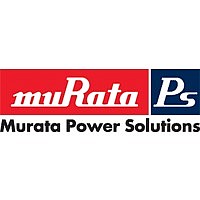DHRB34A221M1CB Murata Electronics North America, DHRB34A221M1CB Datasheet - Page 7

DHRB34A221M1CB
Manufacturer Part Number
DHRB34A221M1CB
Description
CAP 10KV B RAD
Manufacturer
Murata Electronics North America
Series
DHRr
Datasheet
1.DHRB34A221M1CB.pdf
(20 pages)
Specifications of DHRB34A221M1CB
Capacitance
220pF
Voltage - Rated
10000V (10kV)
Tolerance
±20%
Temperature Coefficient
B
Mounting Type
Through Hole
Operating Temperature
-25°C ~ 85°C
Applications
General Purpose
Ratings
-
Package / Case
Radial - Disc
Size / Dimension
-
Height
-
Thickness
-
Lead Spacing
-
Features
High Voltage
Lead Style
-
Lead Free Status / Rohs Status
Lead free / RoHS Compliant
Other names
Q6021196
1
!Note
!Note
6
No.
10
11
12
13 Solderability of Leads
(Note) Tests for Dielectric Strength (between lead wires), Charge Discharge Test, Humidity, Temperature Cycle and Life should be performed with
specimens having molded resin (MR1023C : made by Murata) extending over 3mm on all the surface.
* "room condition" Temperature: 15 to 35D, Relative humidity: 45 to 75%, Atmospheric pressure: 86 to 106kPa
Specifications and Test Methods
Continued from the preceding page.
Charge
Discharge
Test
Temperature
Cycle
Strength
of Lead
• Please read rating and !CAUTION (for storage, operating, rating, soldering, mounting and handling) in this catalog to prevent smoking and/or burning, etc.
• This catalog has only typical specifications because there is no space for detailed specifications. Therefore, please approve our product specifications or transact the approval sheet for product specifications before ordering.
Please read rating and !CAUTION (for storage, operating, rating, soldering, mounting and handling) in this PDF catalog to prevent smoking and/or burning, etc.
This catalog has only typical specifications. Therefore, you are requested to approve our product specifications or to transact the approval sheet for product specificaions before ordering.
Item
Appearance
Capacitance
Change
D.F.
I.R.
Dielectric Strength
(Between
Lead Wires)
Appearance
Capacitance
Change
D.F.
I.R.
Dielectric Strength
(Between
Lead Wires)
Pull
Bending
No marked defect.
Within ±10%
5000MΩ min.
No failure.
No marked defect.
Within ±10%
5000MΩ min.
No failure.
Lead wire should not be cut off.
Capacitor should not be broken.
Lead wire should be soldered with
uniform coating on the axial direction
over 3 4 – of the circumferential direction.
ZM
ZM
B
B
Specifications
1.5% max.
4.0% max.
1.5% max.
4.0% max.
Charge discharge test should be measured in the following test
circuit and cycle.
Applied voltage : Rated voltage
Cycle time : 20000 cycle
Post-treatment : Capacitor should be stored for 4 hrs. at *room
condition.
Temperature cycle should be measured in the following test.
Cycle time : 5 cycle
Post-treatment : Capacitor should be stored for 4 hrs. at *room
condition.
As shown in the figure at right, fix the body of the
capacitor and apply a tensile weight gradually to
each lead wire in the radial direction of the
capacitor up to 10N and keep it for 10±1 sec.
Each lead wire should be subjected to 5N of weight and bent
90˚ at the point of egress, in one direciton, then returned to its
original position and bent 90˚ in the opposite direction at the
rate of one bend in 2 to 3 sec.
The lead wire of a capacitor should be dipped into a 25%
methanol solution of rosin and then into molten solder of
235±5˚C for 2±0.5 sec. In both cases the depth of dipping is up
to about 1.5 to 2.0mm from the root of lead wires.
E
R
1
<Circuit>
Cx : specimen
R
C
R
E : direct-current voltage source
-30˚C
1
0
2
: circuit protective resistor (300kΩ)
: supplied energy for Cx. C
: current limitting resistor (E/10Ω)
C
0
SW
30
Testing Method
R
C
2
X
30
Charge
1
+100˚C
<Cycle>
(min)
0
.
= . 10Cx
2
C41E2.pdf 03.4.16
Discharge
1
W
2
(sec.)





















